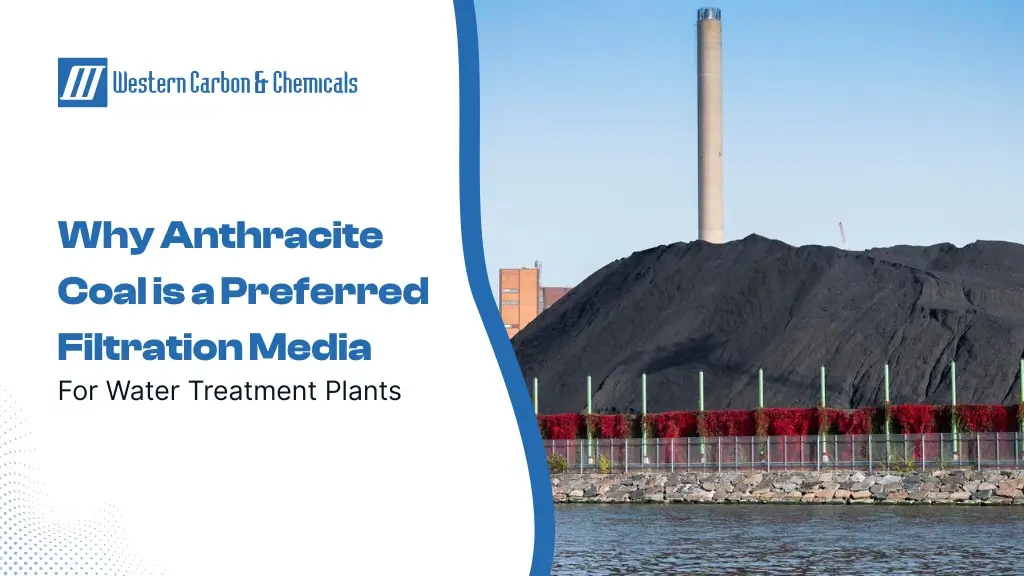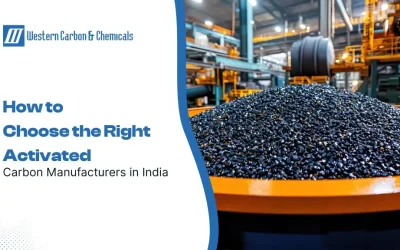Introduction: The Growing Importance of Filtration Media
Modern water treatment plants require filtration media that combine efficiency, durability, and sustainability. Anthracite Coal has become a preferred choice due to its exceptional filtration capabilities and long service life. Industrial buyers and municipal authorities increasingly rely on this high-performance medium to achieve crystal-clear water. Leading Activated Carbon Manufacturers in India provide high-quality anthracite coal designed specifically for multi-media filtration systems.
What is Anthracite Coal?
Definition and Composition
Anthracite Coal is a high-grade coal known for its high carbon content and minimal impurities. Unlike bituminous or sub-bituminous coal, anthracite is dense, hard, and exhibits a glossy texture. Its unique composition makes it ideal for water filtration, as it effectively traps particulate matter while allowing high flow rates.
Key Physical and Chemical Properties
- Carbon content exceeding 85–95%.
- Low volatile matter and minimal moisture absorption.
- High specific gravity, typically around 1.3–1.5.
- Exceptional mechanical hardness reduces attrition in filtration systems.
The Role of Anthracite Coal in Water Treatment
Filtration Mechanism Explained
Anthracite coal serves as a coarse filtration medium that removes suspended solids and turbidity from water. Its multi-pore structure captures larger particles at the surface while smaller contaminants are trapped deeper within the media bed. This gradient filtration ensures high water clarity without clogging the system prematurely.
Comparison with Other Filtration Media
Compared to sand, garnet, or gravel, anthracite coal has superior durability and lower pressure drop. It maintains performance even under high flow rates, making it ideal for industrial and municipal water treatment plants.
Advantages of Using Anthracite Coal
High Hardness and Durability
The robust structure of anthracite coal prevents breakdown over time. This mechanical strength ensures long operational life and reduces frequent media replacement.
Superior Filtration Efficiency
Anthracite coal provides high filtration rates while capturing a wide range of suspended solids. Its performance remains consistent, even under variable flow conditions and changing water quality.
Low Ash Content and Reduced Maintenance
Low ash content minimizes residual buildup, thereby decreasing the frequency of backwashing and overall maintenance costs.
Layered Filtration Systems: Anthracite in Practice
Dual and Multi-Media Filtration
Anthracite coal is often combined with sand or garnet in multi-media filters. The coarser anthracite layer sits atop finer sand or garnet layers, creating an efficient stratified filtration system that maximizes contaminant removal.
Optimal Layer Configuration
Typically, anthracite forms the top layer with a depth ranging from 18–24 inches. Below it, sand and garnet layers ensure removal of finer particles, creating a multi-stage filtration effect for pristine water quality.
Industrial Applications Beyond Water Treatment
Wastewater Management
Anthracite coal is extensively used in industrial wastewater treatment to remove suspended solids, oils, and other contaminants before discharge or recycling.
Chemical and Pharmaceutical Processing
In chemical manufacturing and pharmaceutical production, anthracite ensures that process water meets stringent quality standards, preventing contamination of sensitive products.
Selecting the Right Grade of Anthracite Coal
Grain Size, Specific Gravity, and Porosity
Optimal filtration depends on selecting the correct particle size and density. Coarser particles ensure efficient backwashing, while finer particles improve turbidity removal.
Quality Standards and Certifications
Look for ISO-certified anthracite coal from reputable Activated Carbon Manufacturers in India, ensuring consistent quality, low impurities, and adherence to industrial standards.
Why Buyers Prefer Anthracite Coal
Longevity and Cost-Effectiveness
Its long operational life reduces media replacement frequency, offering significant cost savings over time.
Consistent Performance Under Variable Conditions
Anthracite maintains efficiency even with fluctuating water chemistry, turbidity, and flow rates, making it reliable for diverse treatment plants.
Choosing Trusted Activated Carbon Manufacturers in India
Technical Support and Product Expertise
Suppliers provide technical guidance on media selection, filtration system design, and troubleshooting, ensuring optimal performance.
Local Supply and Certification Compliance
Local manufacturers guarantee timely delivery, compliance with Indian water treatment standards, and ongoing technical support for industrial clients.
Environmental and Sustainability Considerations
Renewable Practices and Eco-friendly Sourcing
While anthracite is a natural mineral resource, responsible sourcing and minimizing environmental impact remain key considerations for modern water treatment projects.
Minimizing Environmental Footprint
Efficient filtration reduces chemical consumption, energy usage, and waste generation, aligning with sustainable water treatment practices.
Conclusion
Anthracite Coal is a high-performance filtration medium that combines durability, efficiency, and cost-effectiveness. Its use in water treatment plants ensures superior water quality, reduced maintenance, and long-term operational savings.





